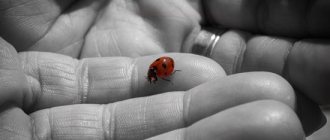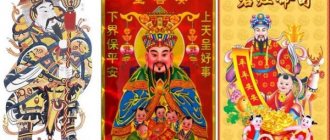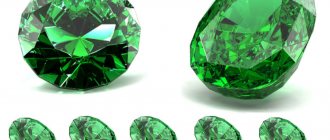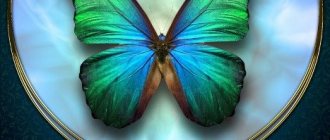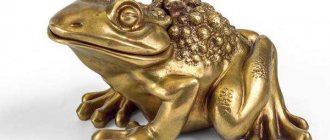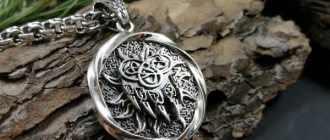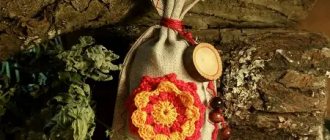Background about cranes according to Feng Shui
Many ancient legends tell about the wonderful properties of this sophisticated bird. For example, in ancient mythology, the crane was a companion of the god Apollo as a spring solar bird.
The crane became a companion to the god Hermes, the patron saint of travelers, because of its powerful wings that never tire.
figurine “pair of cranes”
In the service of the goddess Demeter, the crane is a companion - a harbinger of a rich harvest.
Among the ancient peoples of Europe and Asia, the arrival of cranes in their lands was considered a good sign, promising a bountiful harvest and favorable events in people's lives.
There is a myth that when Hermes invented the alphabet, he wrote the first 7 letters while watching the flight of a crane wedge.
In Eastern countries, especially in China and Japan, the crane has been revered and respected since ancient times. It is a symbol of health, longevity, wisdom, prosperity, high position, nobility and justice, and is also considered a talisman of good luck. A pair of cranes symbolizes strong marriage bonds and family happiness.
mating dances of cranes
The Chinese also believe that cranes accompany angels in the sky, as well as the souls of the dead, to the other world.
And the Japanese used to consider cranes “people in feathers”, they believed that cranes were capable of taking on a human form, being messengers of God on earth.
According to one Japanese legend, a person who makes a thousand cranes out of paper will gain health and long life.
The whole world remembers the story of the Hiroshima girl Sadako Sasaki, who survived the atomic bombing at the age of 4 and died at the age of 14 from radiation sickness. She began folding paper cranes with the hope of recovery, but only managed to make 643 figures. Sadako folded the last one, having already lost her sight. The remaining 1,357 cranes were folded by the children from the girl’s class.
Sadako became the prototype for a sculpture installed in the Peace Park in Hiroshima in memory of the child victims of the atomic bomb. A bronze figure of a girl holds the last crane, which she managed to make herself. To some extent, the belief about a long life in relation to Sadako was justified.
She died, but remained “to live in the memory” of millions of people. It has become a tradition according to which schoolchildren who come on excursions to Hiroshima must visit the Peace Park and come to the monument, leaving bundles of pre-prepared paper cranes with it.
Sadako Sasaki
In a word, the crane is a strong-winged, wise bird with many enviable qualities that have always been revered by people. Therefore, in Feng Shui, special attention is paid to it.
Sacred paper figurine
This belief goes deep into the Japanese Middle Ages, when it was popular among the nobility to send notes to each other in the form of folded origami figures. One of the simplest is a paper crane
or as it is called in Japanese “tsuru”. Folding it requires only twelve operations. At that time in Japan it symbolized longevity and happiness. This is where the belief came from: if you make a thousand tsuru and make a wish, it will definitely come true.
A gifted paper crane was sacred, and it brought good luck and happiness to the person being gifted. In 1917, a book was published in China, the title of which was Sembatsuru Orikata, which means “folding a thousand cranes.” This book discusses various ways of folding a paper crane and variations of its decoration.
Cranes in Feng Shui - varieties
According to Feng Shui, cranes are used as a talisman that bestows health and long life, since in nature these birds live quite a long time. You can see both a “single” symbol and in combination with others.
Sadako Sasaki
For example, in China, a crane or cranes are often depicted (in paintings or panels) with other symbols of longevity - a pine tree or a cypress tree. In Japan - with chrysanthemum and pine.
A crane with a turtle (most often the crane stands directly on the turtle) means long life, happiness and protection from troubles and various troubles in life.
A crane with a stone in its paw is a symbol of vigilance and protection, faithful guard.
In order to protect its life from predators, the crane stands in the swamp on one leg and clutches a stone in the other. As soon as he dozes off and relaxes, a stone immediately falls and wakes up this sentry, tirelessly guarding his life and the life of his family.
This characteristic feature of the crane is reflected not only in Feng Shui, but also in world heraldry. The image of a crane with a stone was widely used on ancient noble family coats of arms.
Sadako Peace Garden in Santa Barbara
A crane with sand pouring out of its beak means silence and prudence.
A crane with a snake in its mouth represents the struggle between good and evil.
Two cranes in a nest or a crane mating dance is a symbol of a happy married life, fidelity and a strong union.
A flying crane means “high-flying bird,” that is, a symbol of achieving its goal.
Crane with peaches – good health and longevity.
Meaning of origami crane
Perhaps the paper crane pattern is one of the oldest, as it was first mentioned in Japanese origami books of the 18th century. The meaning of the origami Japanese crane is interpreted as a wish-granter. Even in those distant times, a legend arose according to which, if you want your most cherished dream to come true, you need to make a thousand birds out of paper. Of particular importance is that the cranes made must be distributed to family and friends. By the way, it is generally recommended to distribute these products to strangers. Such a gift means that the person thereby does 1000 good deeds. So go ahead, towards the fulfillment of your desires.
Kotobukizuru for special occasions
For festive interior decoration, the Japanese have a special variety of cranes called “Kotobuki Tsuru”. The models are distinguished by a fan-shaped tail, slightly reminiscent of a peacock. Most often, they are used to make pendants, additionally decorated with beads, ribbons and braided cords. If for traditional “tsuru” you can use any paper, here special sheets with a beautiful heterogeneous texture called “washi” are highly recommended. They are made from the bark of the gampi tree, Japanese mulberry or bamboo. Due to the special weaving of the fibers, washi paper is thin and very durable; it is almost impossible to tear it with your hands.
Detailed diagram of the festive origami crane:
A similar origami toy can be given as a gift for a wedding, birthday or housewarming. It is believed that “Kotobuki Tsuru” brings happiness, prosperity and prosperity to the home. If the scheme for creating an exquisite talisman is not entirely clear, you can make it by following the video instructions:
Application of figures
The step-by-step instructions for an origami crane are simple, and even a beginner can handle it. The finished product is very elegant and can be used as a decoration for a card or a themed party. There are many ways to use these figures:
Paper cranes will be a wonderful addition to any interior - in minimalism you can use monochromatic figures, and in the nursery you can place birds made of multi-colored craft paper.- You can assemble a mobile from figurines, add a drop of lavender oil to each and place it above the bed - this decor will speed up the process of falling asleep and improve the quality of sleep. You can hang cranes with orange or grapefruit essential oil above your desk to stimulate performance and improve body tone.
- Tantezuru garlands under the ceiling at different heights look very beautiful. Such a decorative element will give the room an oriental flavor and improve your mood.
- You can use a small crane as a pendant in a car - initially carrying positive energy, it will help moderate the manifestation of negative emotions on the road and prevent accidents. And if you apply a little of your favorite aroma - essential oil or perfume - you will get a wonderful air flavoring. True, you can’t overdo it here - unlike a room, there is much less space in a car, so the smell can get intense.
- You can follow the example of the Japanese and give such a figure to a loved one, wishing them longevity, prosperity, prosperity and the fulfillment of their cherished desires.
In any case, the crane is intended to bring joy and hope, and a hand-made gift will emphasize the importance of the recipient to the giver.
Cranes in the interior
Some modern designers use paper birds to decorate houses and apartments, and, on festive occasions, offices and work spaces.
Cranes suspended on threads from a chandelier and flowerpots, sitting on boring shelves and tables, can transform a room. Such cheerful, bold decisions always bring kind smiles to the faces of others.
Crane -
A flying crane is a symbol of a high goal. This meaning is indirectly indicated by the well-known proverb: “Better is a bird in the hand than a pie in the sky,” revealing the life credo of the modern man in the street who does not want to risk his existing, habitual treasures for the sake of a big but elusive goal. Like other birds standing in the water, the crane is one of the embodiments of the light of the morning sun, since it is the first to see its rise. As an intermediary between worlds, the crane acts as a messenger from God and a guide for the souls of the dead to the place of their afterlife. Thanks to its long beak and mating dances, the crane in many traditions acts as a phallic symbol, as well as a messenger of fertility, bringing rain. Mediterranean cultures are characterized by the erotic “crane dance”. The use of the crane as an allegory of justice, longevity, righteousness and a merciful soul is very widespread (from Mediterranean cultures to China).
How to choose a beautiful crane craft?
To decide which craft to choose to create beautiful origami, you need to focus on several important selection criteria:
- classic origami without cutting or gluing;
- a complicated or combined version of the craft, which includes the use of additional materials to connect parts and allows gluing;
- “conditional” origami, which means that the ancient art itself is taken only as a base, but the creator of this masterpiece is not limited in any way in his imagination and possibilities of using materials.
Naturally, it will be difficult to make a choice right away, and if you don’t want to figure it out for a long time, then it’s best to pay attention to the simplest options.
If you still have some experience in creating origami, then you can focus on the photo of an origami crane and choose among them the version of the craft that you simply like the most.
Next, you should find step-by-step instructions and arm yourself with the required materials.
Materials for creating a crane using origami technique:
- a square sheet of paper of any color;
- scissors.
A simple version of a paper crane
To master new creative skills, start with the basics. To learn the origami technique, you need to start with the simplest crafts. This is what the crane is.
Fold the sheet of paper carefully and according to the pattern - this way you will not get confused and will make a beautiful, neat toy.
Origami crane step by step instructions
- You need to take a sheet of paper and cut a square out of it
- Fold diagonally
- We bend the edges.
- Let's make a triangle.
- Fold it again.
- We alternately wrap both corners of the triangle
- The result is a rhombus, the edges of which need to be bent. Turn the figure inside out.
- Again we bend the edges on one side and the other alternately
- Now you need to bend the edges. We got the head and tail of the bird.
- Making a beak
- Spread the wings. The craft is ready!

